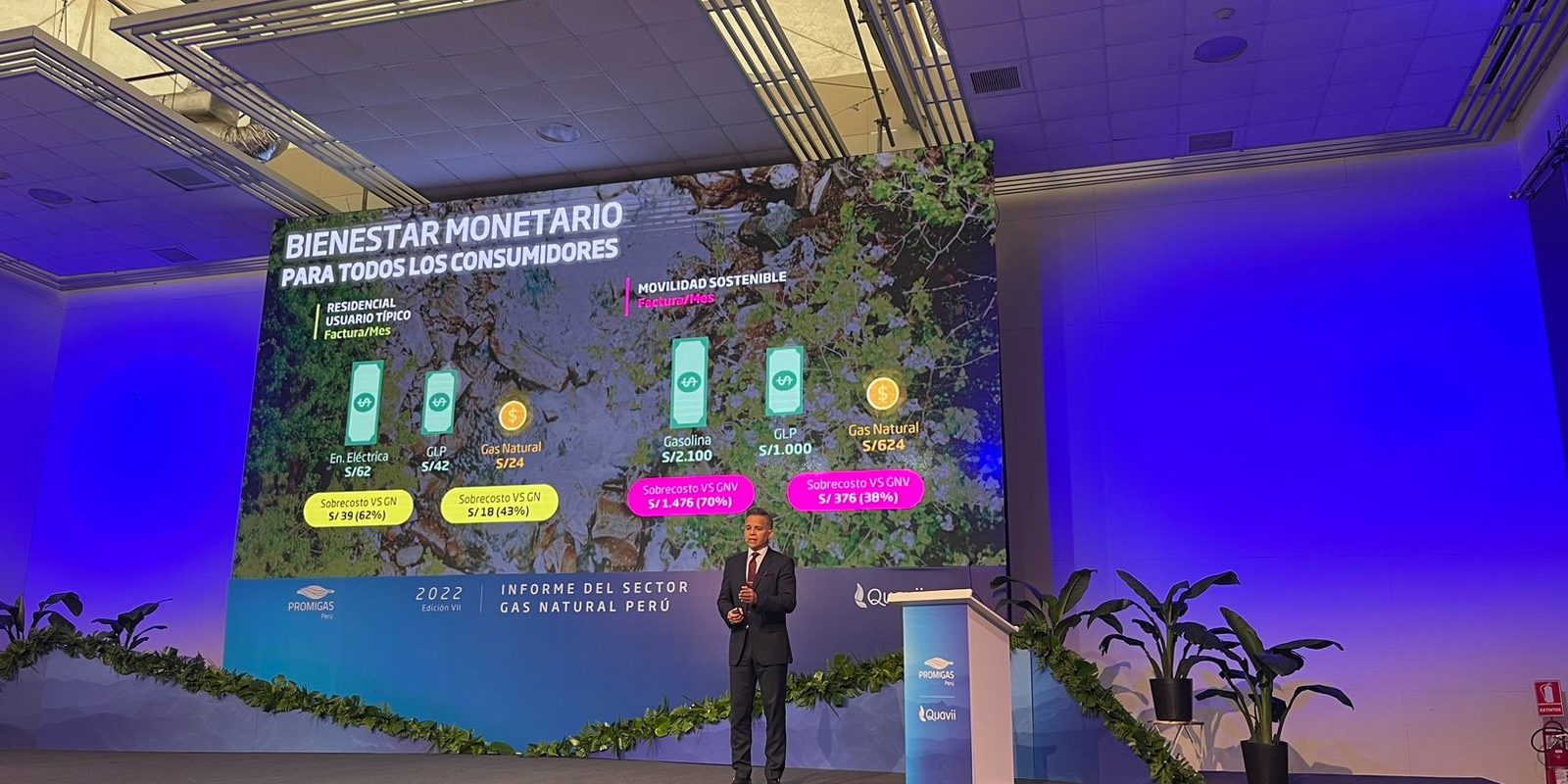During the presentation of the VII edition of the Report on the Natural Gas Sector in Peru by Promigas, the country’s situation of natural gas for vehicles, its growth, its environmental and economic advantages and the challenges to achieve real widespread adoption throughout the territory were addressed.
“Within the dimension of environmental well-being, CNG is a fuel that is aimed at helping our country, which was cataloged by a specialized publication as having the worst air quality in Latin America in 2021. The transport sector is responsible of GHG emissions, and the automotive fleet generates 70% of this pollution. That is why CNG is positioned as an alternative to mitigate this pollution, avoiding more than 1.36 million tons of CO2, equivalent to taking 900,000 vehicles out of circulation in one year. The Ministry of Energy ratifies it with its goal of reducing CO2 emissions by 40% by 2030 and achieving zero carbon by 2050,” said Aquiles Mercado, Financial and Administrative Vice President of Promigas.
In 2021, more than 20,000 vehicles were incorporated into the CNG system, reaching 326,000 accumulated NGVs. In addition, there are 344 service stations to serve this number of vehicles, not only in Lima, where the majority are concentrated, but also in the north and south of the country.
In this sense, Bonogas is a major support to finance the conversion process to natural gas, providing a loan with low interest of 3% per year and up to 5 years to pay for the transformation of the vehicle. “In addition, according to the Andina news agency, in the last 18 years, when the history of natural gas began in Peru, CNG users in Lima and Callao have saved more than 11.6 billion dollars, a very important figure in addition to the environmental benefits already mentioned,” added Mercado.
Challenges in sustainable mobility
In a world scenario of high fuel prices, the debate on the energy future of the country arises. Today, Peru is a net importer of oil and derived fuels such as gasoline and diesel. About 60% of fuels are imported to meet the local energy demand. Faced with this fact, specialists in the hydrocarbon sector agree that at the country level the energy resources that are currently produced, such as natural gas, and whose reserves are guaranteed for more than 20 years, should be looked at.
In this regard, Felipe Cantuarias Salaverry, President of the Peruvian Hydrocarbons Society (SPH), points out that “we are producers of natural gas, an economical, efficient and more environmentally friendly energy. In its vehicular use, it can boost our energy independence in transportation and thus not depend on the price of fuel and oil, whose cost is set in the international market.”
CNG represents great savings for users because its price is regulated within the framework of state concessions for its extraction, transportation, and distribution. The specialist in hydrocarbons clarifies that “this means that the value of acquisition of natural gas by service stations is similar and that the differences in terms of price to the final consumer (marketing) are related to the commercial policies of each one of the stations, transport costs and promotions.”
Quoting Salaverry, Mercado listed three challenges to achieve a widespread use of natural gas for vehicles on a national scale:
- Political decision and regulations by the state to migrate from an energy matrix in public and private transportation made up of diesel, gasoline and LPG to natural gas.
- Reducing the logistics costs of transporting natural gas. To make it widespread, pipeline infrastructure is needed. When there are no base volumes that allow pipelines to be built, a differential price for CNG can be granted to stimulate the transition.
- Expanding the network of CNG stations and support investments in infrastructure to meet demand. Tax benefits are needed to import equipment to develop filling stations and vehicle conversion kits.
Concessionaires have fulfilled and, in some cases, exceeded their contractual obligations, achieving a robust and constantly evolving infrastructure. However, for sector analysts this process has not yet taken off with the dynamism that the country requires, more so in the current context, in which fuel prices affect the residential, transportation and industrial sectors, requiring a high level of government subsidy. The widespread use of natural gas is the solution: energy independence, abundance, regulated price, reliability, safety and environmental friendliness.
Source: Promigas







